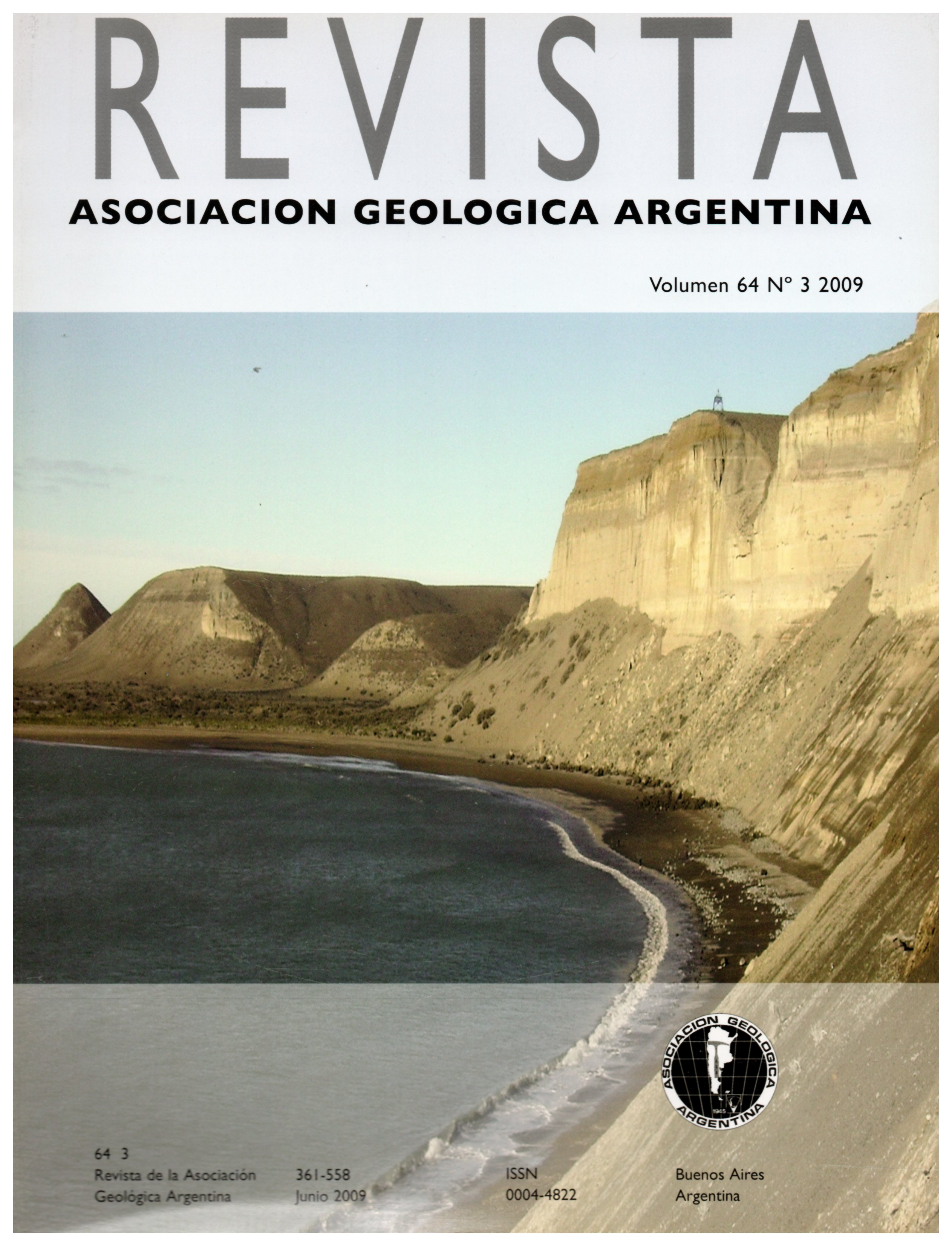The Miocene epithermal mineralization of the Quevar Stratovolcan Complex, Salta
Main Article Content
Abstract
The epithermal system of the Incahuasi Valley contains the three Ag-Pb-Zn mines of Vince, Armonía and Quespejahuar. They are located on the SW side of the Quevar Stratovolcan Complex, in the Puna, NW Argentina, and covers approx. 1500 km2. The geology of the region includes a variety of lithologic units varying in age from the Precambric to present. During the Upper Miocene K-rich dacitic to andesitic volcanism occured along major NW-SE trending wrench corridors (Calama- Olacapato-El Toro lineament) in the form of huge caldera eruptions (ignimbrite sheets) followed by large stratovolcanoes (e.g. Quevar). The mining area in the Incahuasi valley consists of a succession of (rhyo) dacites and andesites where the Main Dacite acts as the host-rock for all ore assemblages. The approximately 50 km2 alteration zone on the SW flank of the Quevar Stratovolcan Complex crops out over a vertical distance of 1000 m. The mineralization occurs as veinlets, irregular bodies and disseminations in the host rock. Two main ore forming stages can be distinguished. The earlier one is characterized by a very complex variety of mostly fine grained Ag sulfides and sulfosalts located in the western end of the Armonía mine which is situated within a strongly silicified vuggy breccia dyke. These ore minerals have a strongly varying semi-metal content. The later ore forming stage is developed all along the creek and is regarded as a Pb-Zn-Sb assemblage. The ore mineralogy may correspond to the most southern part of the Ag-Sn metallogeneticprovince of Bolivia.
Article Details

This work is licensed under a Creative Commons Attribution-NonCommercial 4.0 International License.
Nota de copyright
Los autores conservan los derechos de autor y garantizan a la revista el derecho de ser la primera publicación del trabajo licenciado según una licencia de atribución Creative Commons que permite a otros compartir el trabajo con el reconocimiento de la autoría y de la publicación en la que se publicó por primera vez.
Declaración de privacidad
Los nombres y direcciones de correo electrónico introducidos en esta revista se usarán exclusivamente para los fines declarados por esta revista y no estarán disponibles para ningún otro propósito u otra persona.

